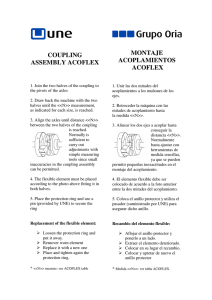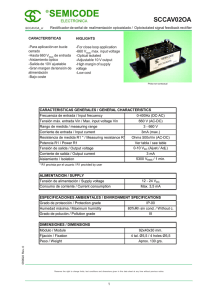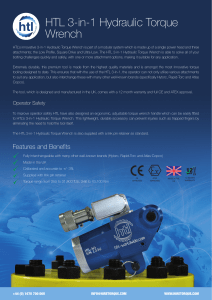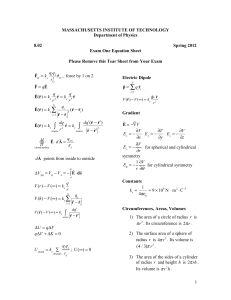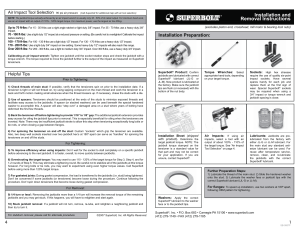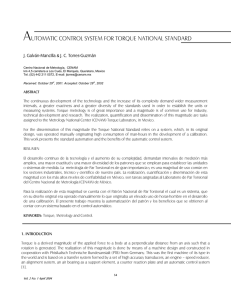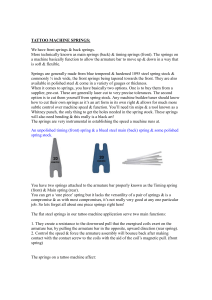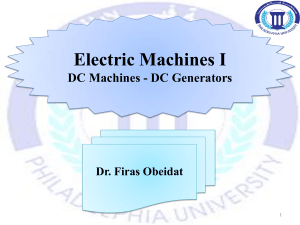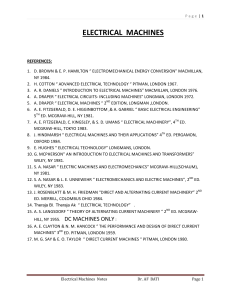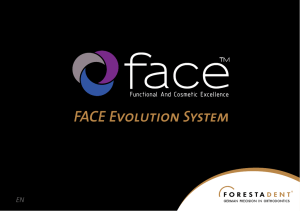1- coil body / cuerpo de bobina 2
Anuncio
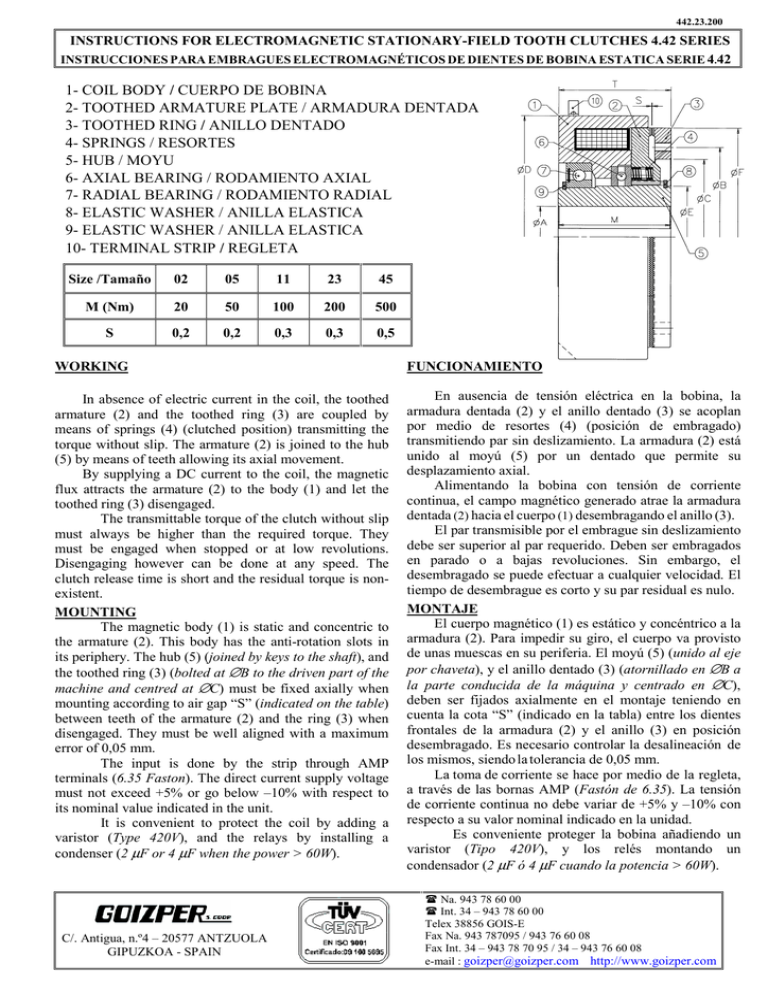
442.23.200 INSTRUCTIONS FOR ELECTROMAGNETIC STATIONARY-FIELD TOOTH CLUTCHES 4.42 SERIES INSTRUCCIONES PARA EMBRAGUES ELECTROMAGNÉTICOS DE DIENTES DE BOBINA ESTATICA SERIE 4.42 1- COIL BODY / CUERPO DE BOBINA 2- TOOTHED ARMATURE PLATE / ARMADURA DENTADA 3- TOOTHED RING / ANILLO DENTADO 4- SPRINGS / RESORTES 5- HUB / MOYU 6- AXIAL BEARING / RODAMIENTO AXIAL 7- RADIAL BEARING / RODAMIENTO RADIAL 8- ELASTIC WASHER / ANILLA ELASTICA 9- ELASTIC WASHER / ANILLA ELASTICA 10- TERMINAL STRIP / REGLETA Size /Tamaño 02 05 11 23 45 M (Nm) 20 50 100 200 500 S 0,2 0,2 0,3 0,3 0,5 WORKING FUNCIONAMIENTO In absence of electric current in the coil, the toothed armature (2) and the toothed ring (3) are coupled by means of springs (4) (clutched position) transmitting the torque without slip. The armature (2) is joined to the hub (5) by means of teeth allowing its axial movement. By supplying a DC current to the coil, the magnetic flux attracts the armature (2) to the body (1) and let the toothed ring (3) disengaged. The transmittable torque of the clutch without slip must always be higher than the required torque. They must be engaged when stopped or at low revolutions. Disengaging however can be done at any speed. The clutch release time is short and the residual torque is nonexistent. MOUNTING The magnetic body (1) is static and concentric to the armature (2). This body has the anti-rotation slots in its periphery. The hub (5) (joined by keys to the shaft), and the toothed ring (3) (bolted at ∅B to the driven part of the machine and centred at ∅C) must be fixed axially when mounting according to air gap “S” (indicated on the table) between teeth of the armature (2) and the ring (3) when disengaged. They must be well aligned with a maximum error of 0,05 mm. The input is done by the strip through AMP terminals (6.35 Faston). The direct current supply voltage must not exceed +5% or go below –10% with respect to its nominal value indicated in the unit. It is convenient to protect the coil by adding a varistor (Type 420V), and the relays by installing a condenser (2 µF or 4 µF when the power > 60W). En ausencia de tensión eléctrica en la bobina, la armadura dentada (2) y el anillo dentado (3) se acoplan por medio de resortes (4) (posición de embragado) transmitiendo par sin deslizamiento. La armadura (2) está unido al moyú (5) por un dentado que permite su desplazamiento axial. Alimentando la bobina con tensión de corriente continua, el campo magnético generado atrae la armadura dentada (2) hacia el cuerpo (1) desembragando el anillo (3). El par transmisible por el embrague sin deslizamiento debe ser superior al par requerido. Deben ser embragados en parado o a bajas revoluciones. Sin embargo, el desembragado se puede efectuar a cualquier velocidad. El tiempo de desembrague es corto y su par residual es nulo. MONTAJE El cuerpo magnético (1) es estático y concéntrico a la armadura (2). Para impedir su giro, el cuerpo va provisto de unas muescas en su periferia. El moyú (5) (unido al eje por chaveta), y el anillo dentado (3) (atornillado en ∅B a la parte conducida de la máquina y centrado en ∅C), deben ser fijados axialmente en el montaje teniendo en cuenta la cota “S” (indicado en la tabla) entre los dientes frontales de la armadura (2) y el anillo (3) en posición desembragado. Es necesario controlar la desalineación de los mismos, siendo la tolerancia de 0,05 mm. La toma de corriente se hace por medio de la regleta, a través de las bornas AMP (Fastón de 6.35). La tensión de corriente continua no debe variar de +5% y –10% con respecto a su valor nominal indicado en la unidad. Es conveniente proteger la bobina añadiendo un varistor (Tipo 420V), y los relés montando un condensador (2 µF ó 4 µF cuando la potencia > 60W). C/. Antigua, n.º4 – 20577 ANTZUOLA GIPUZKOA - SPAIN Na. 943 78 60 00 Int. 34 – 943 78 60 00 Telex 38856 GOIS-E Fax Na. 943 787095 / 943 76 60 08 Fax Int. 34 – 943 78 70 95 / 34 – 943 76 60 08 e-mail : [email protected] http://www.goizper.com
